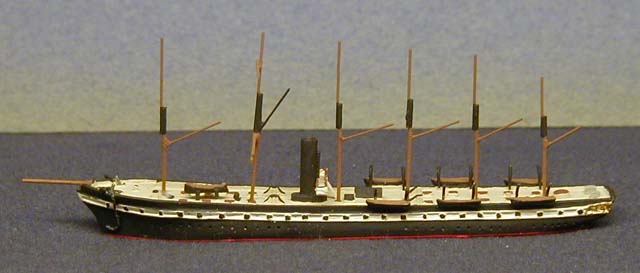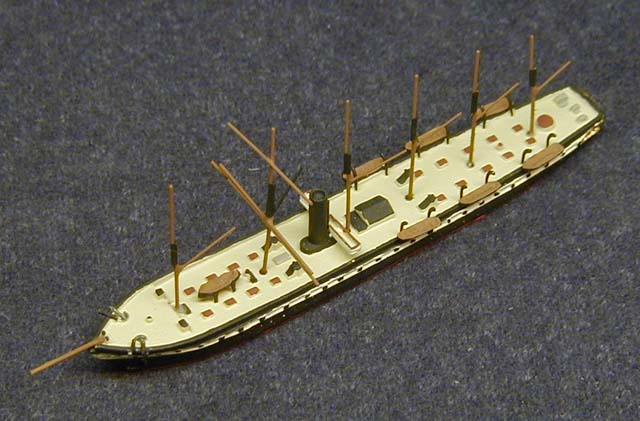Great Britain


Unable to pay repair costs, the ship was offered for sale, but not taken up until 1850 by Gibbs, Bright and Co. She was re-engined and her masts reduced from six to four. She made one transatlantic run and then was switched to the Australian trade. Departing the Mersey 21 Aug 1852, she carried 650 passengers to Melbourne in 82 days. She returned with 260 passengers and £550,000 in gold dust. Re-rigged again with three masts and sold to Liverpool and Australian Navigation Co, she carried 1,000 passengers on her next voyage to Australia. She continued in the Australian trade until 1876, with the exception of service as a transport during the Crimean War (1855-56) and one trip to India during the Mutiny of 1857.
Acquired by Antony Gibb, Sons and Co for bulk trade to San Francisco, her engines were removed and her hull sheathed in wood. On her third voyage out, on 25 Feb 1886, she was forced to stop at Stanley, Falkland Islands, where she was condemned. Used as a coal and wool storage barge for the next 47 years, then abandoned in nearby Sparrow Cove. In 1967 an appeal was made to save the ship, and the Great Britain Project Committee was formed. In 1970 the ship was placed upon a pontoon barge and towed, via Montevideo, back to Bristol, where the ship has been restored to her original configuration, including replicas of her engines and boilers.

 Up
Up